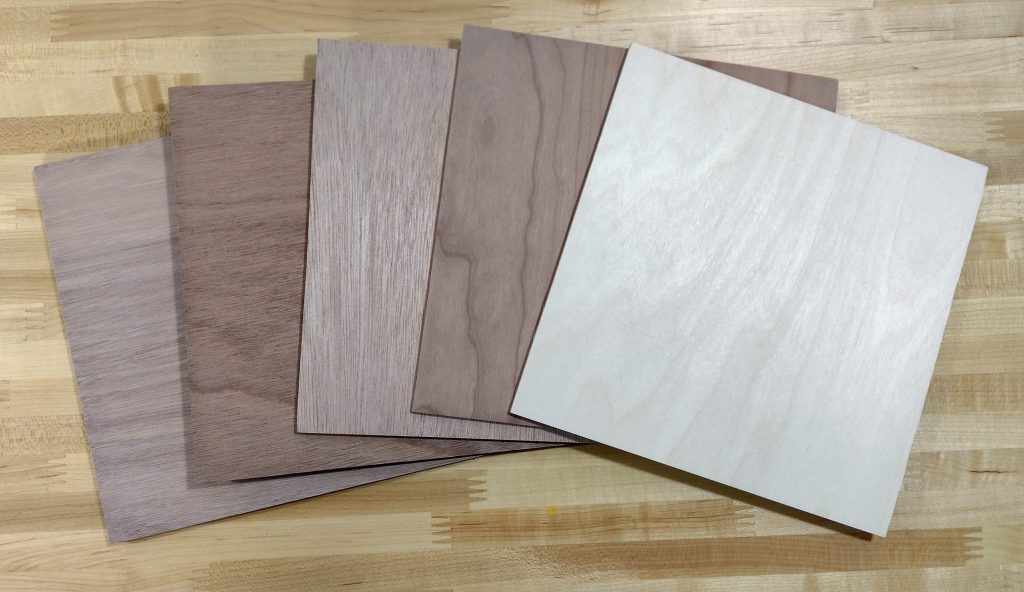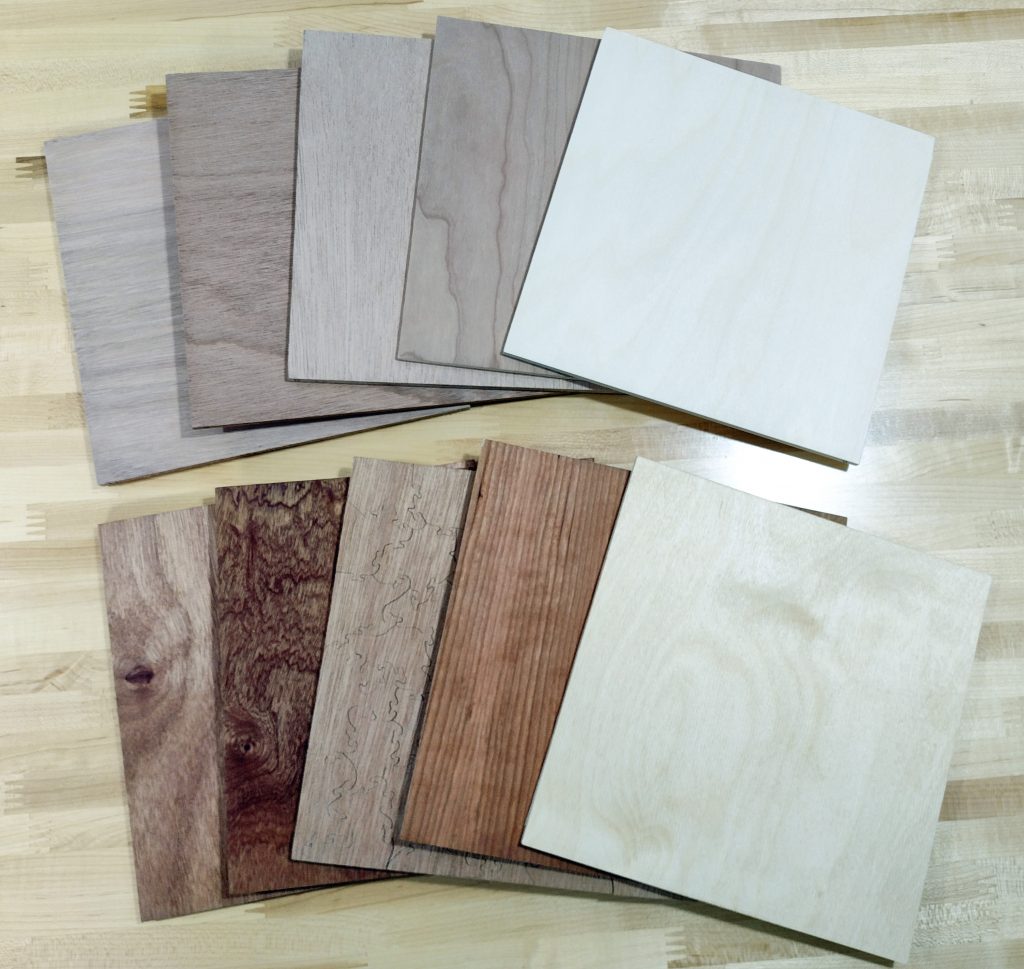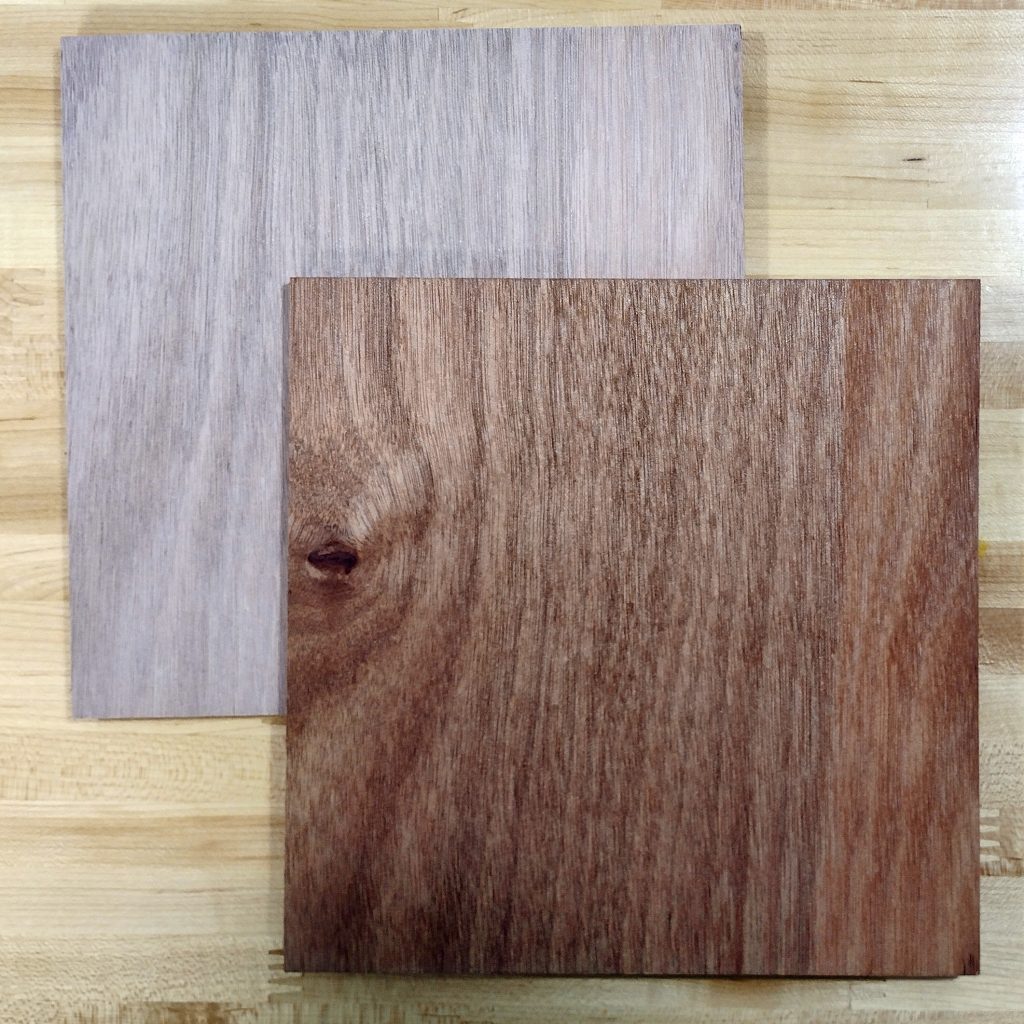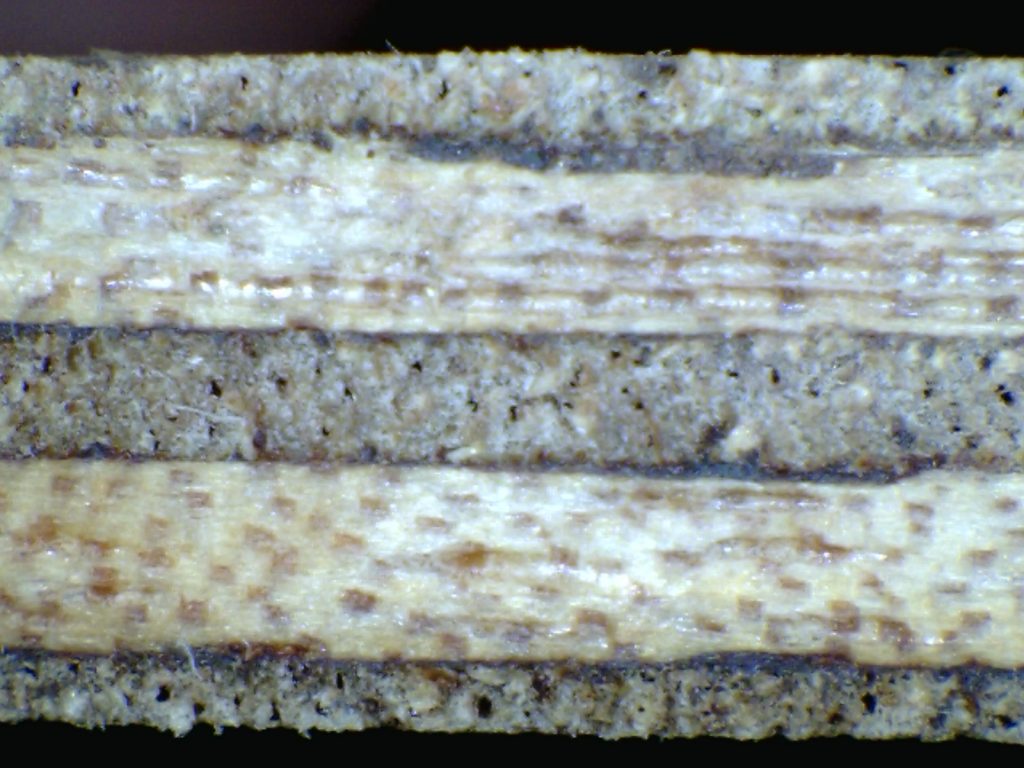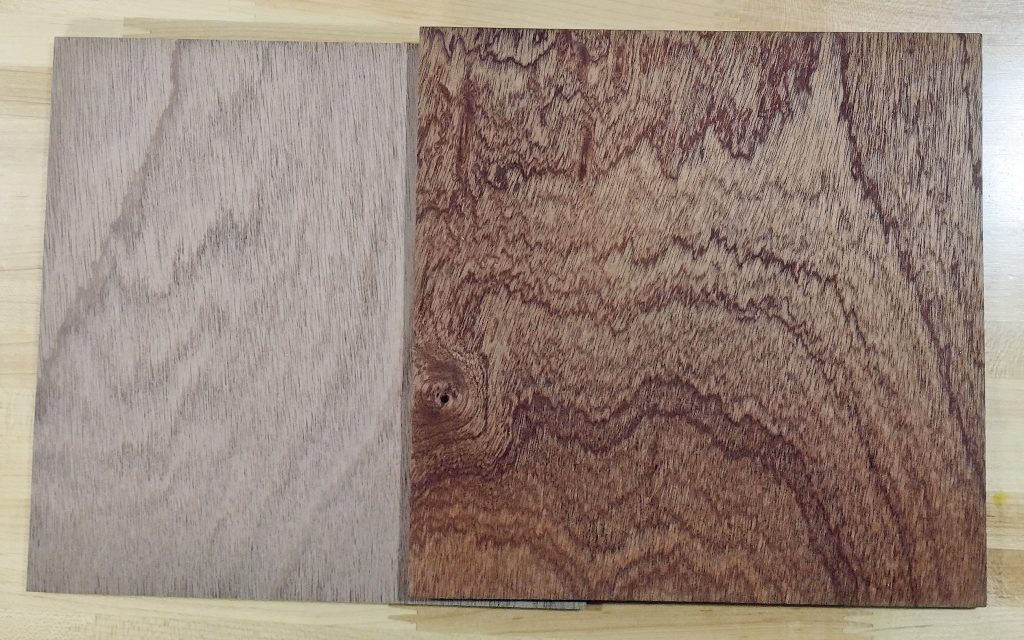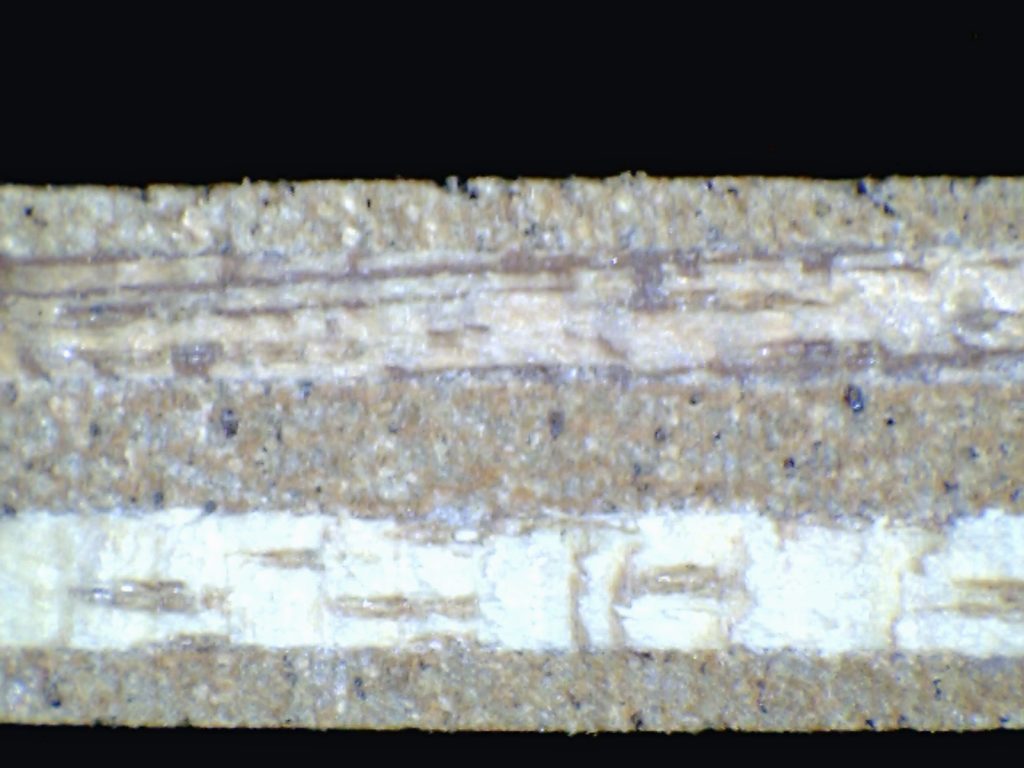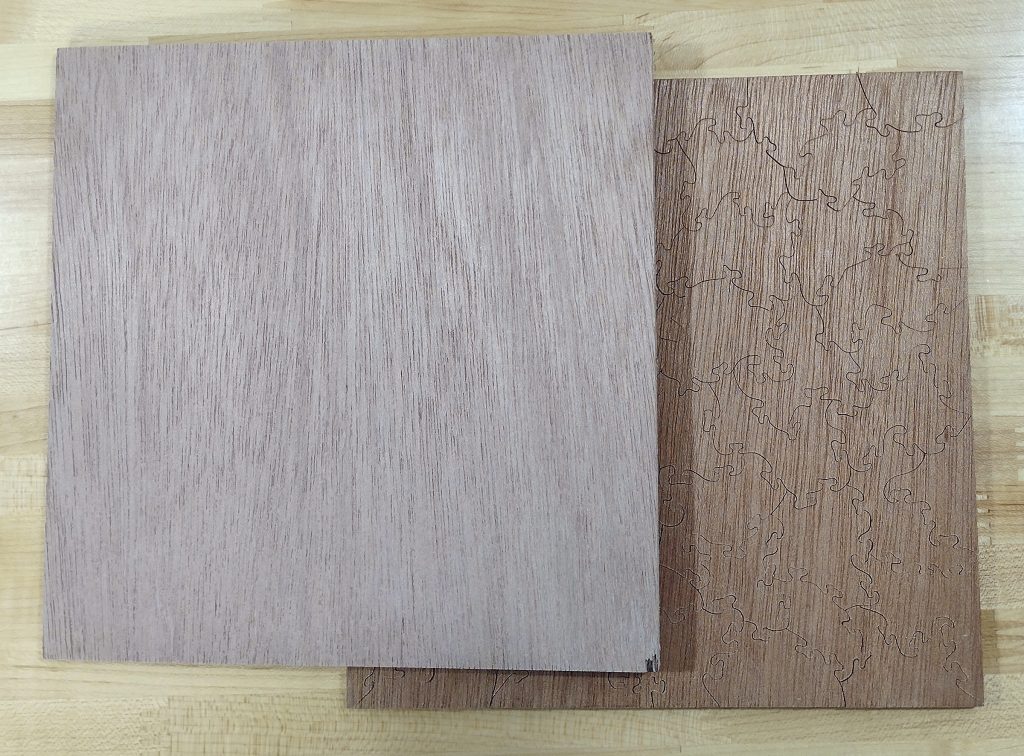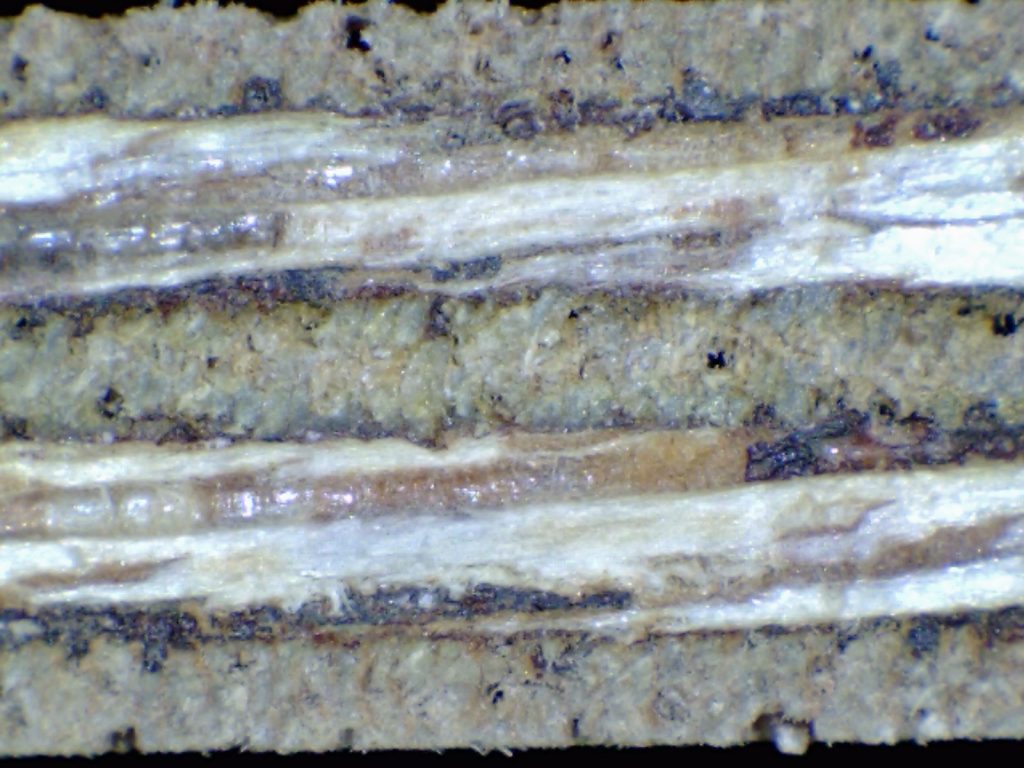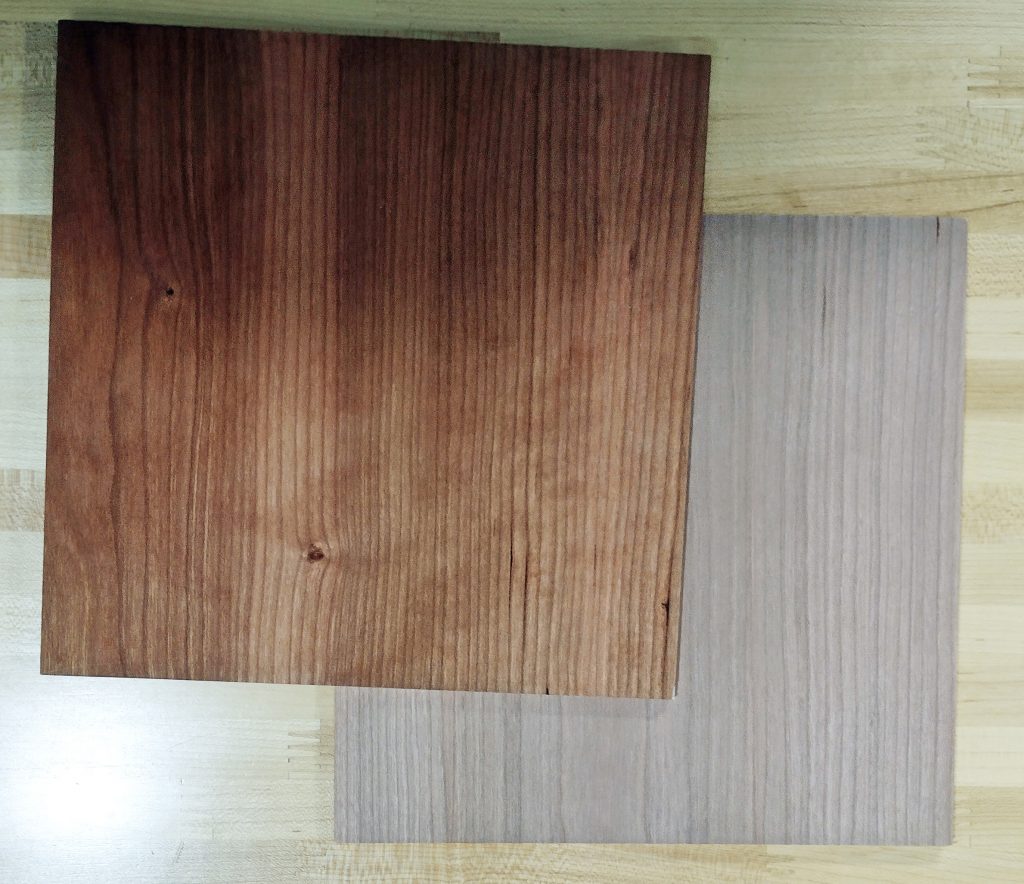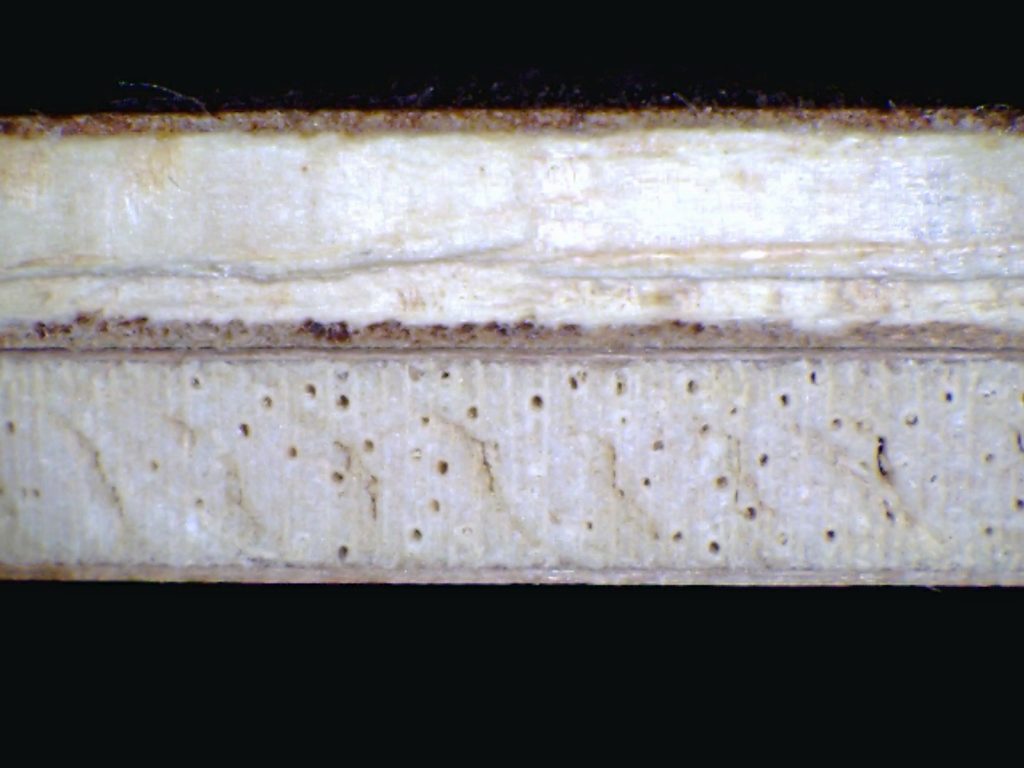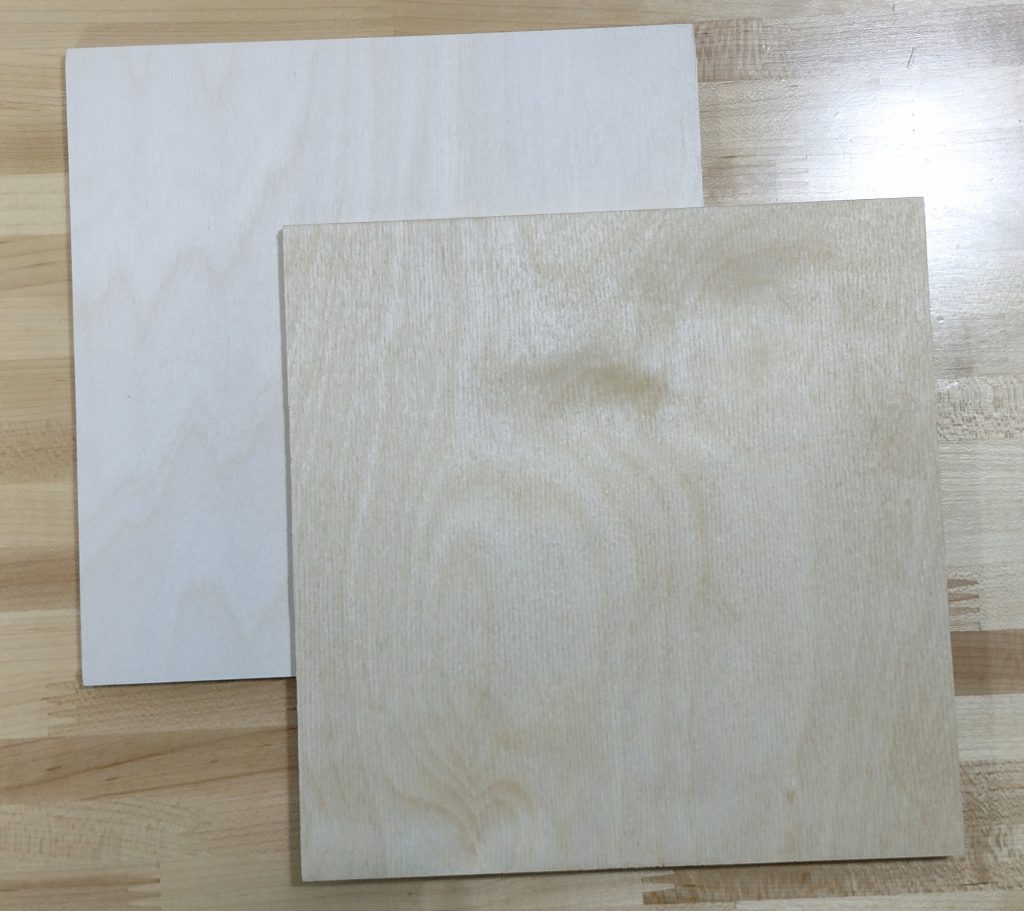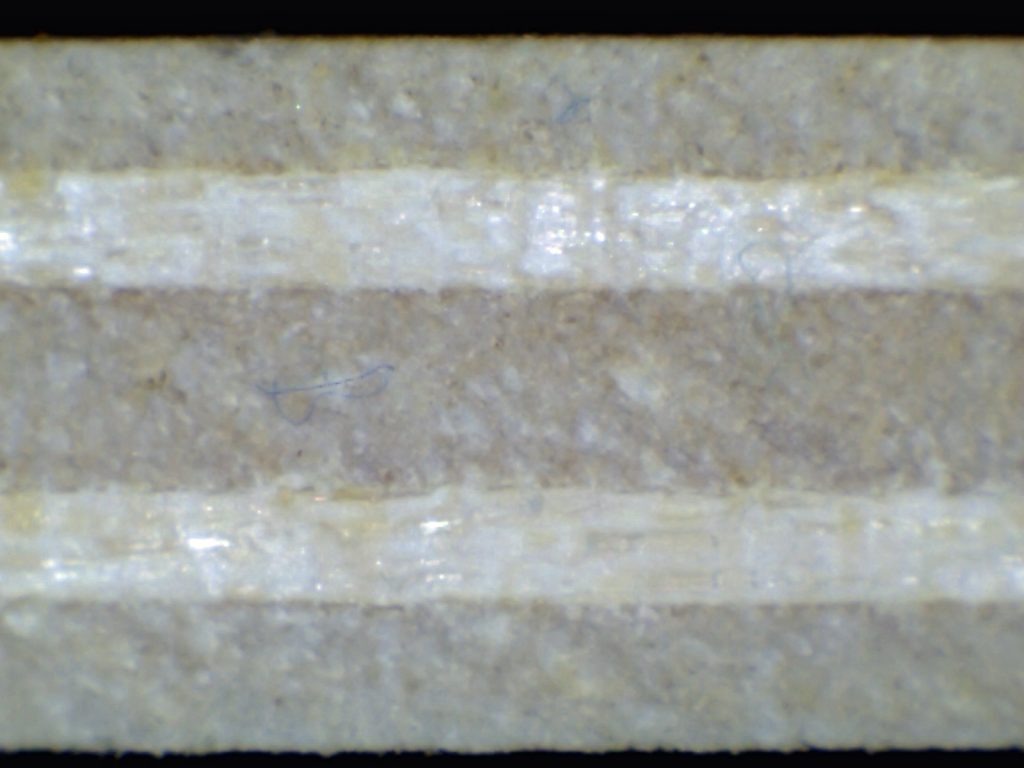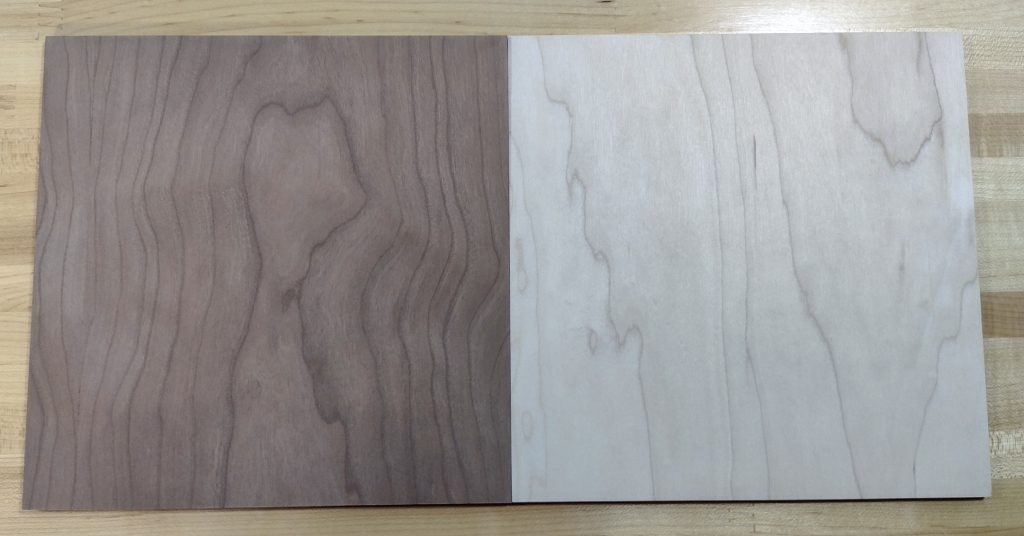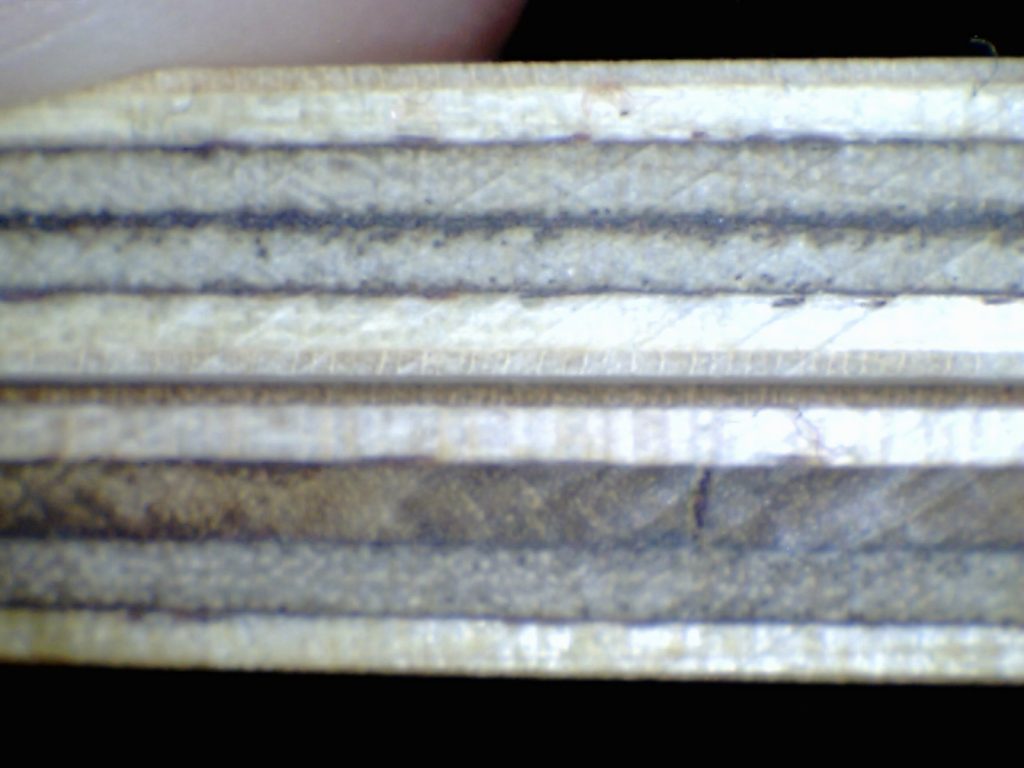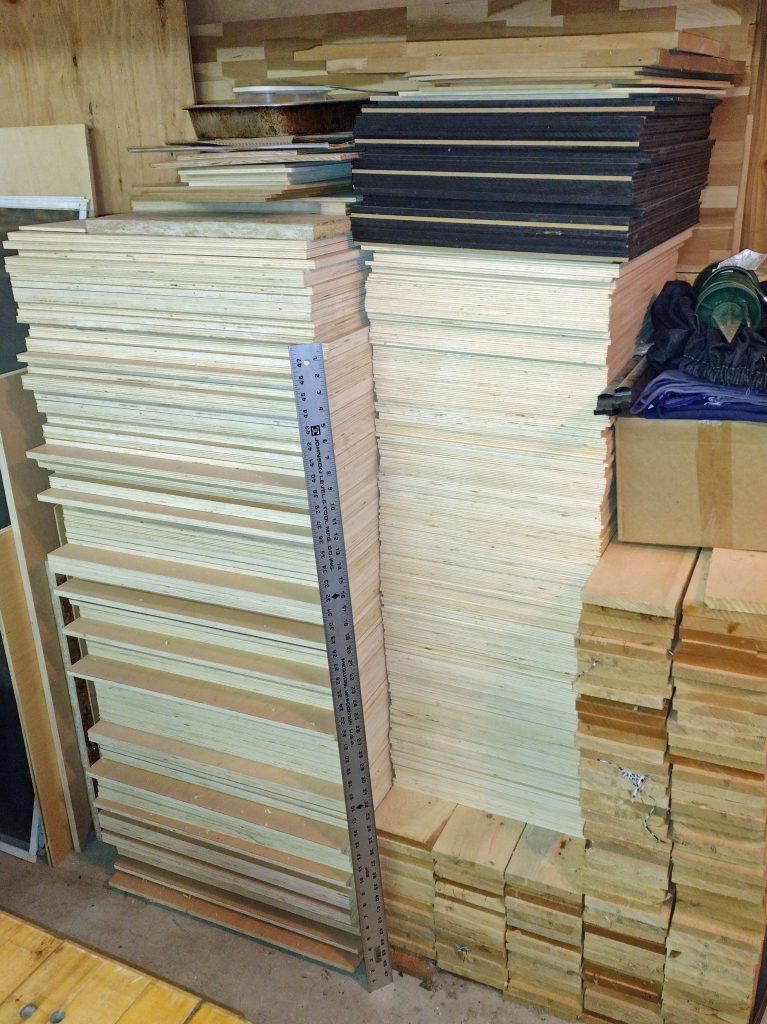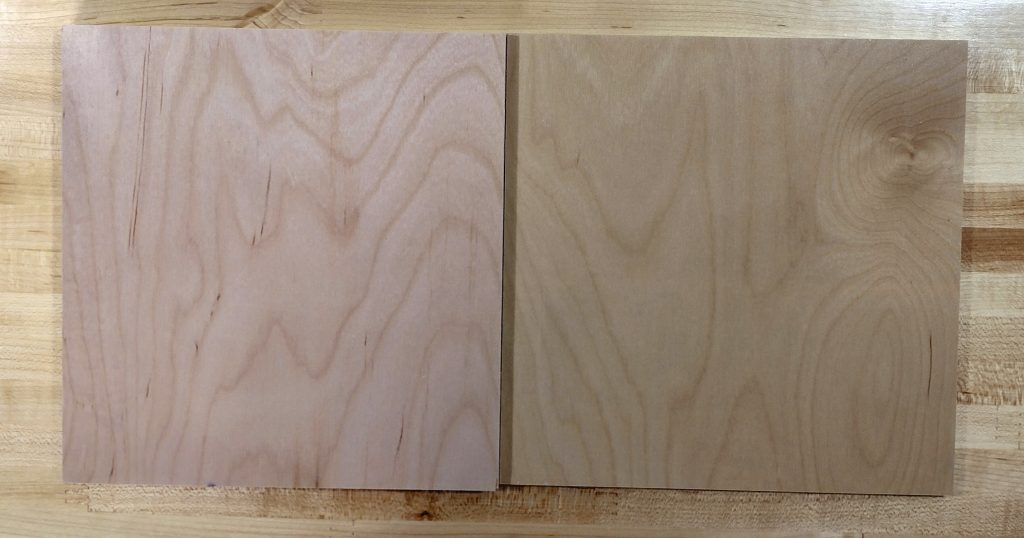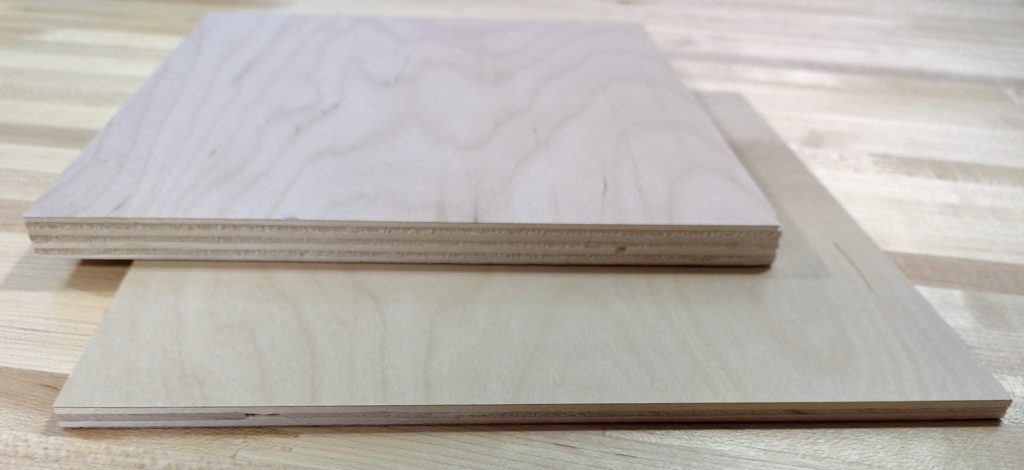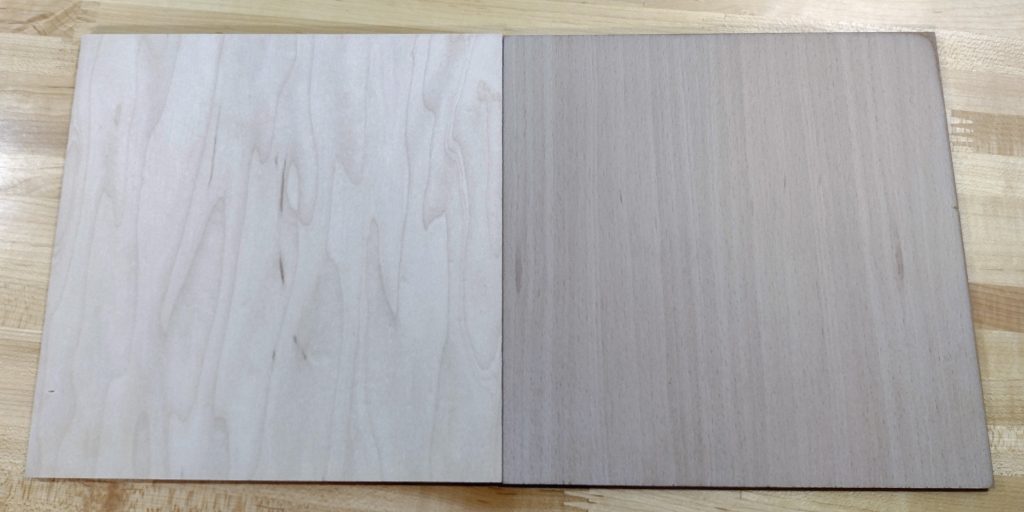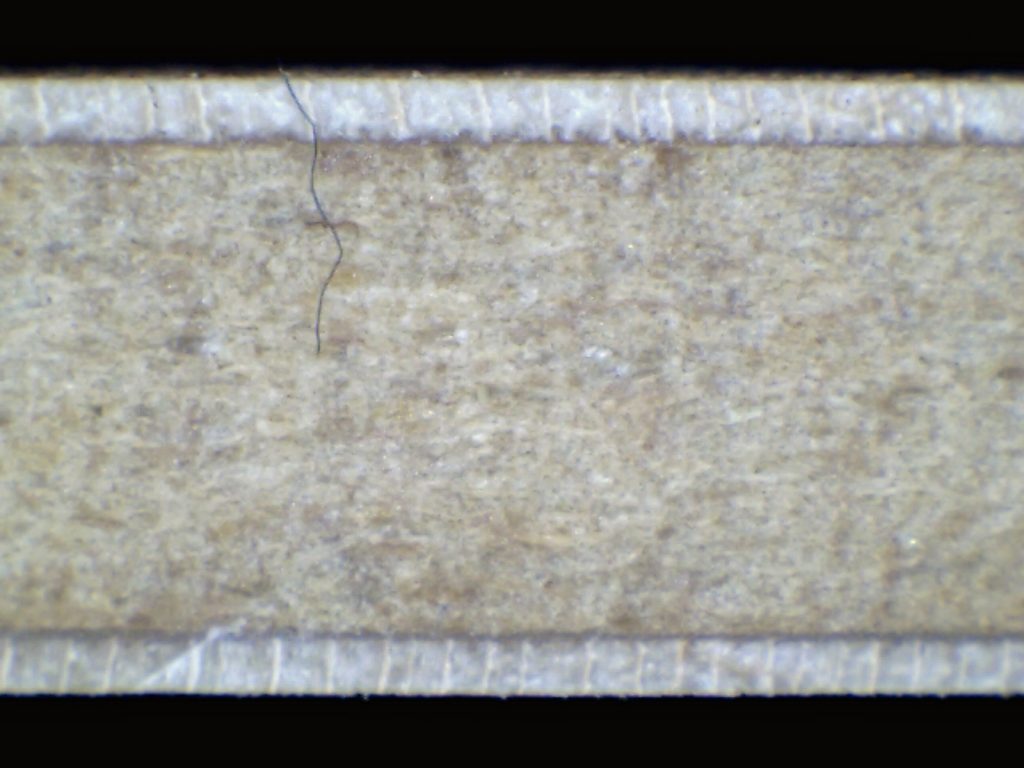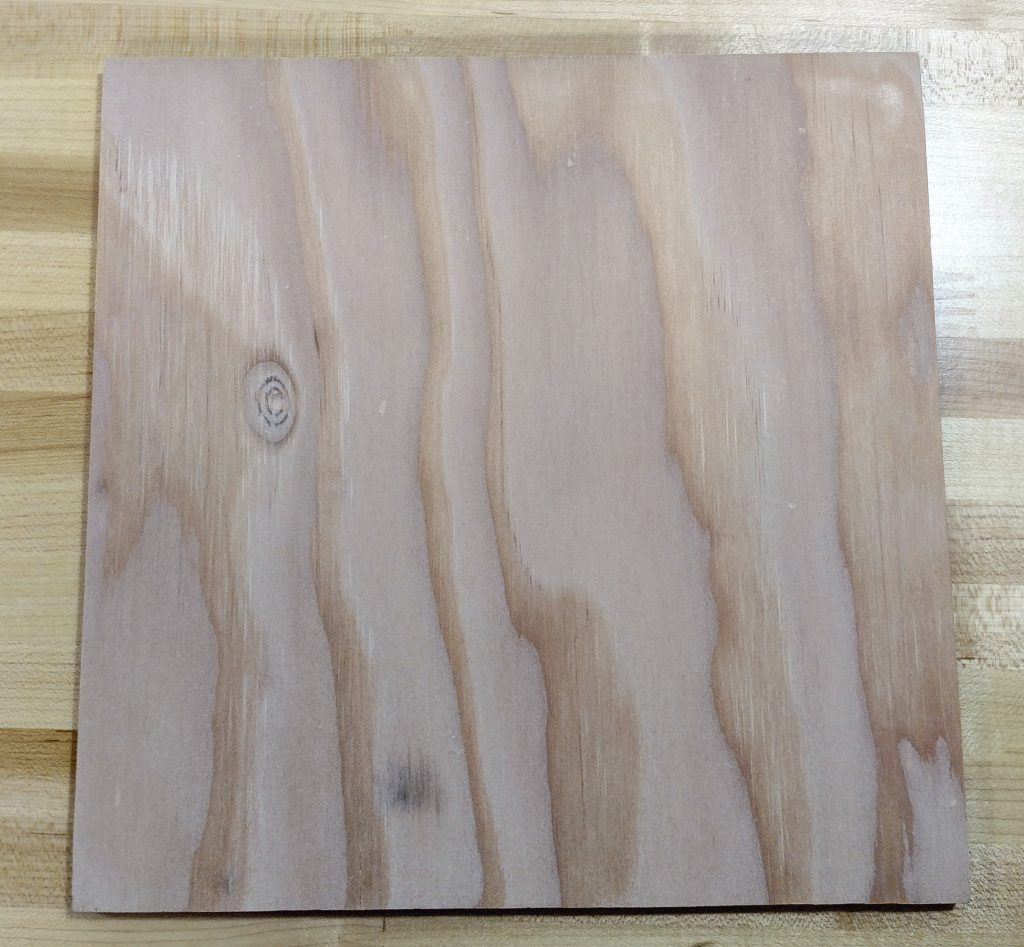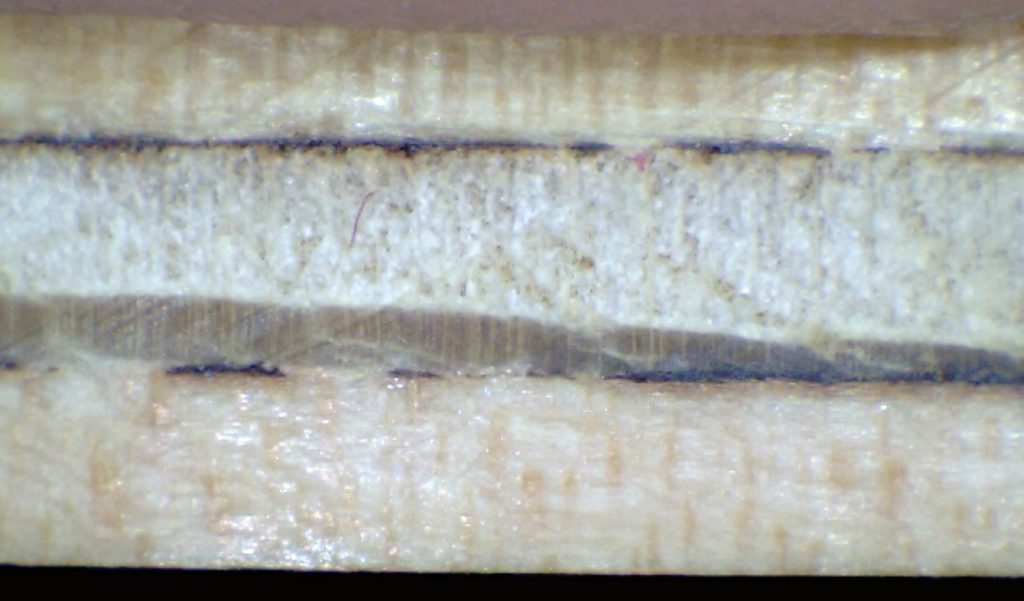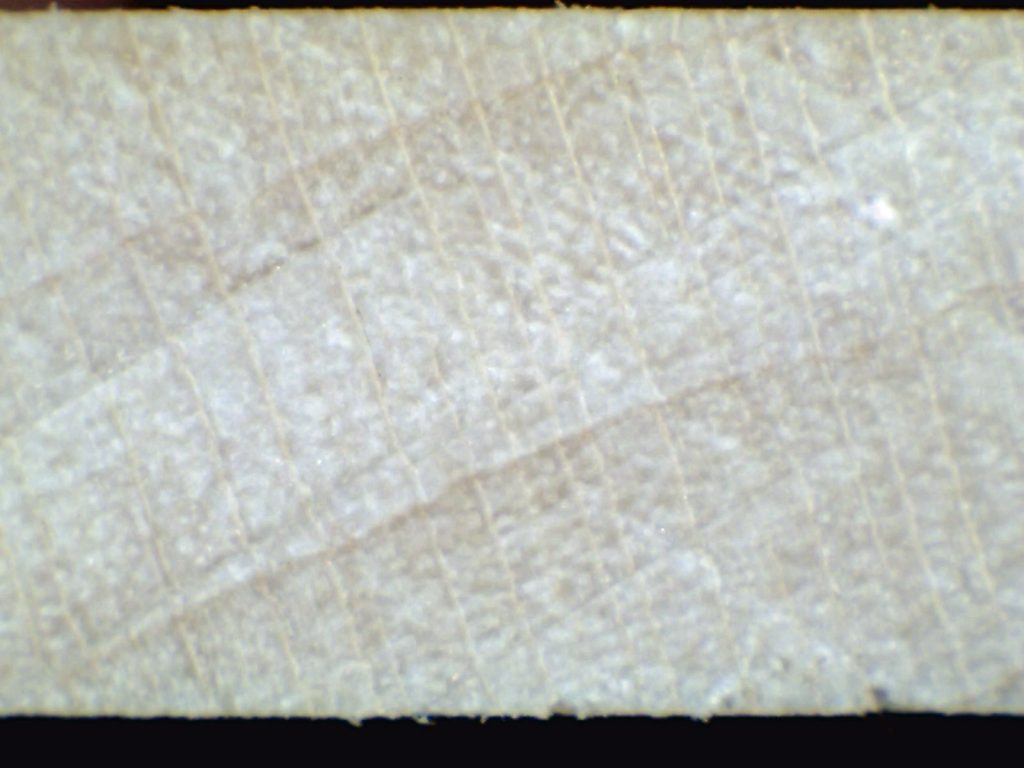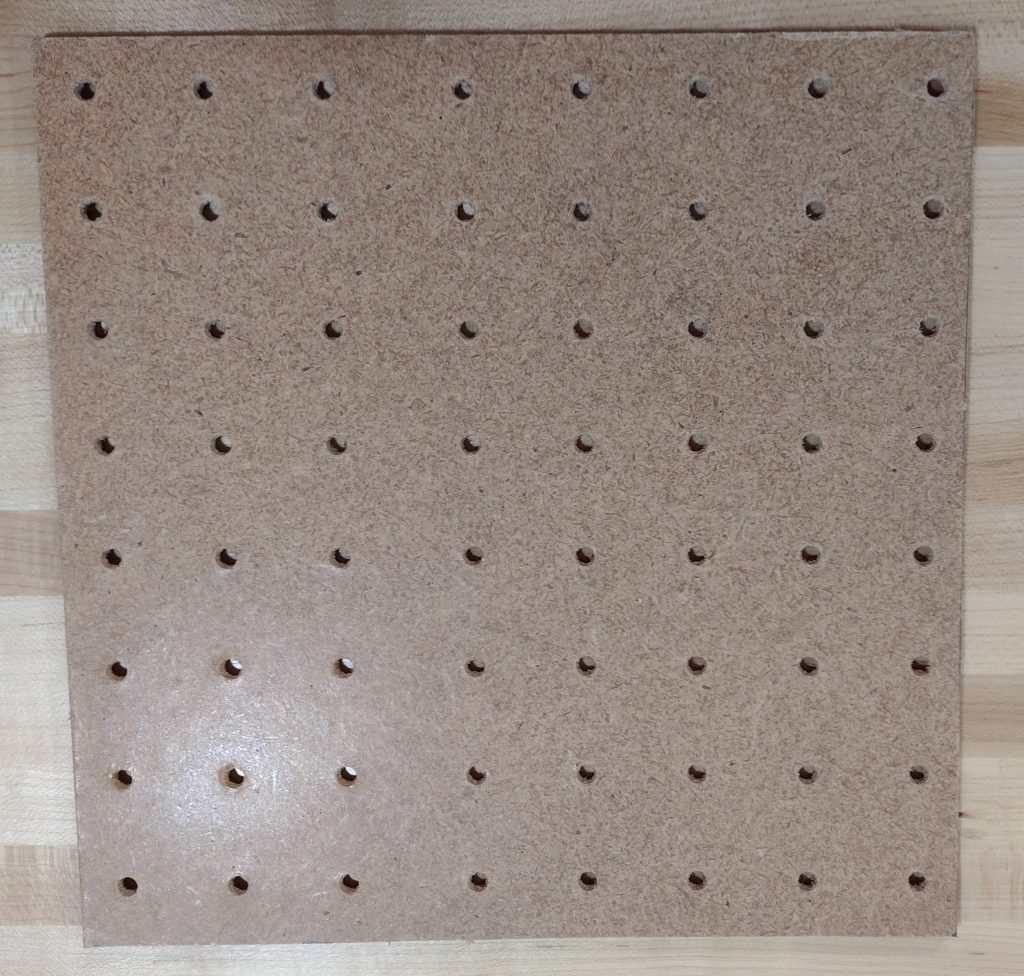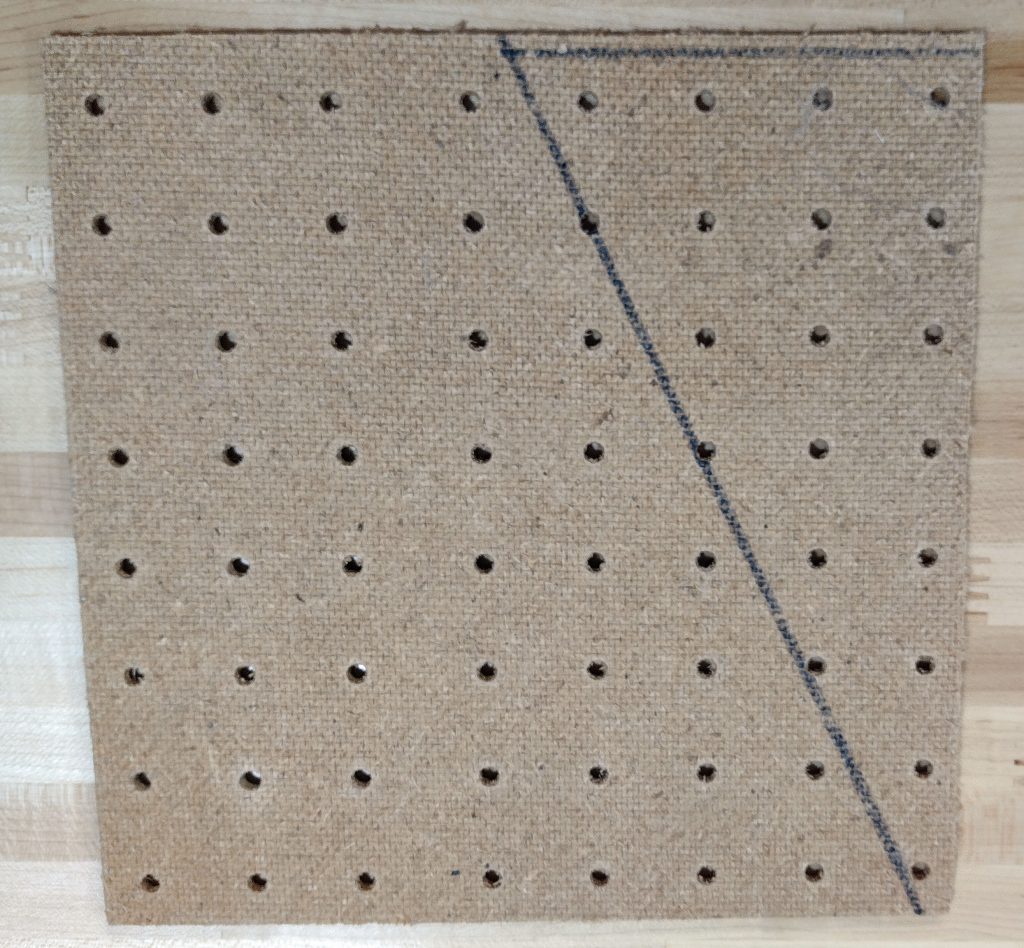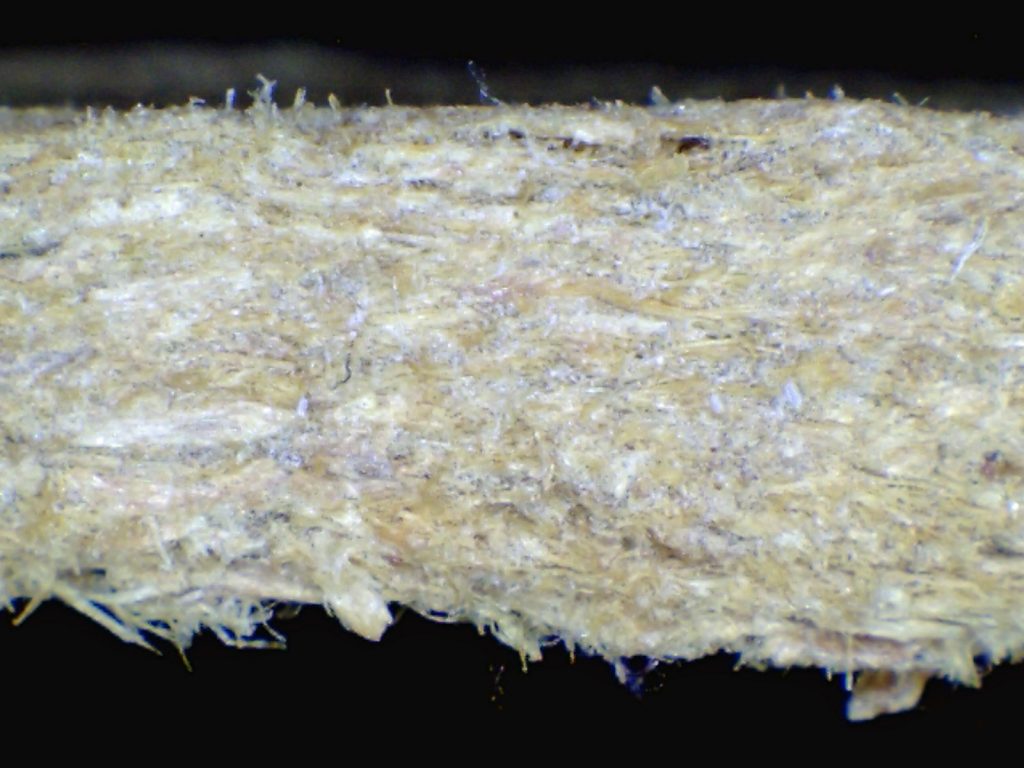Boulter sample pack
The catalyst for this puzzle board comparison was the announced availability of sampler packs from Boulter Plywood with five 8″ x 8″ samples of different varieties of plywood. Dee Rogers on her Facebook group page explained that Chris Boulter had arranged for these sampler packs so puzzle cutters could try out five different types of plywood and see how they like them. BoulterPlywood.com
I thought “Why not?” In August, I finally got around to calling to order a sampler pack. It was pointed out that shipping costs might make it worthwhile to order more than one pack to reduce the impact per order. So, I ordered three packs. $24 of wood, and $17.20 in shipping charges from the east coast to the Spokane, Washington area. So that is 960 square inches of material for $41.20, or $6.18 per square foot. Just in comparison, two weeks later, I bought six 4′ x 4′ panels of Appleply from States Industries in Oregon. The total cost was $585.83 delivered (only $71 of that was shipping). That equates to $6.10 per square foot. The last Baltic birch I bought locally was $61.03 for a 5′ x 5′ panel, or $2.44 per square foot.
The price per square foot is probably not a fair comparison, as I suspect larger pieces from Boulter Plywood to here would be pretty expensive to ship. If you have a local lumber store or specialty store, that is probably your best source price wise. Many of them will also order wood they do not normally carry.
Here is a sampler pack. They are helpfully marked on one edge with a single letter corresponding to the species name.
Since I have three packs, I decided to put a coat of Danish Oil on one side of each variety to see what color is brought out. I also want to see if a finish of some sort reduces the amount of splintering on the back side of the puzzle while cutting, so the oiled samples will be cut with the oil side down (once the oil dries).
The Danish oil really brought out the grain and shows what the wood looks like. Well, except for the Baltic birch. Baltic Birch just looks… bland? The sapele sample is almost iridescent as you tilt it around in the light.
Okoume – Okoume comes from the central African country of Gabon. If you are interested, information about it is available on The Wood Database. I wanted to verify it is not listed on the bad list. It is shown as vulnerable but not on the CITES list. This particular sample is the thickest of them, advertised as 7mm. I measured all of the samples with a dial caliper, and this was actually 7mm. All layers are made of rotary cut okoume. This piece is marine grade plywood, meaning the adhesive meets a specific standard for being water and boil proof (WBP).
Sapelle – Sapelle is from tropical Africa. It is one of the very many woods often lumped together under the mahogany label, although it is not a true mahogany. The Wood Database has good information on it. Like the okoume, it is not listed on the CITES list, but is considered vulnerable. This is also a marine grade plywood. All layers are made of rotary cut sapelle.
Meranti – Meranti is one of many different species that is referred to as Philippine Mahogany, which is no relation to real mahogany from Honduras. It is found throughout Southeast Asia, and although some varieties are vulnerable, some Meranti comes from sustainable sources. Dark Red Meranti | The Wood Database. This is also a marine grade plywood. All layers are made of rotary cut meranti.
Boulter provided cherry – This is the first product examined that is made of two different materials. The outer face veneer is obviously cherry. It is plain sliced. The single inner veneer is poplar. Here are the Wood Database pages for both of those woods.
- Yellow poplar | The Wood Database,
- Poplar, Cottonwood, and Aspen: What’s What? | The Wood Database, and
- Black Cherry | The Wood Database (Hardwood) (wood-database.com).
Notice that most poplar wood used for furniture is not really poplar but comes from the tulip tree. Actual wood from a poplar tree is kind of a trash wood and is used for stuff like pallets, firewood, and making paper. Confusing, right?
This is the thinnest of the samples so far. In the edge view picture below, you can see how thin the face veneers are. Since there is only a single inner ply, I have included a view of both the end grain and the side grain of the inner ply.
Baltic birch – I have been able to easily find this just about everywhere I have lived (residences in 13 different locales in 40 years). Most of it is from nations in the Baltic area, such as Russia, Finland, etc. Baltic Birch | The Wood Database. Baltic birch is a great product even though it is visually boring. It is strong, stable, and flat. I have been using different thicknesses of it for years to make shop jigs, shop cabinets, shop tools, etc. I turned to the 1/4″ version to make puzzles when I decided to get serious about puzzles. All layers are made with rotary cut birch. You can see there are five fairly equally thick layers.
Appleply
Appleply is a product made in Oregon by States Industries. If you cannot find it locally, you can order it direct from ApplePly Hardwood Plywood. They are sometimes out of stock in the sheet size you want, but it may be available in other sizes. I buy the 4′ x 4′ sheets. If you do, I recommend you buy it in groups of four to get the most out of your shipping dollar. They ship them UPS in a big box with up to four sheets in one box. A nice protector sheet of packing material is between each plywood sheet, and edge protectors of thick hardened cardboard do a great job. I have ordered from them twice and have not been disappointed.
Appleply is made with inner layers of birch or alder. They have various options to choose from for the face veneer. I usually pick cherry, but I recently included a sheet of their white maple. There are a lot of maple species, but since they are located in the Pacific Northwest, I am going to assume they are using Bigleaf maple. I am also assuming the inner layers are rotary cut with the face layers plain cut. Some of the cherry I have has beautiful book matching grain. Here are the Wood Database pages for the new species introduced.
You can see this wood has four inner veneers with two fairly thin face veneers.
Cabinet shop off-cuts
Cabinet grade plywood – There is a cabinet shop located nearby that makes and sells high quality cabinets to a nationwide market. They used to have an outlet store where you could obtain pallets full of scraps and quality reject wood pieces. By this I mean they would cut a drawer front, and if there was a small splinter it would be rejected. You might have a 6″ x 24″ of 3/4″ thick maple that was in good shape except for a little nick on one corner. I frequented this place quite often, as the wood projects I make are often of a smaller size. One time, I was able to pick up a pallet of sheet goods at a price that I still cannot believe. The 1/2″ thick panels are 2′ x 2′, and the 1/4″ panels are 16″ x 18″. The face veneers are maple, and I assume the inner layers are birch or alder. The 1/2″ sample has seven inner plies and two face veneers. The 1/4″ sample has three inner plies and two face veneers.
The stacks are considerably shorter than they were, but you can see there is quite a bit of plywood there. As an added bonus, they are finished on the good side with some sort of varnish or lacquer. I thought I was going to make unique puzzles from this, but the 1/2″ material is really too thick. I have sold a few, and exchanged some at a Puzzle Parley, but that is all. The 1/4″ plywood is quality wood but is not as good for puzzle making as Baltic birch and Appleply. I use scraps of it for practicing different or new puzzle piece styles. I will include one blank of each of this stuff in my little comparison project.
MDF core panels – included in the same pallet were some thinner panels that have an MDF core and face veneers of maple and alder. These are nominally about 3/16″. I have not used these for puzzles before but will include some in this test. If you look at the upper right-hand corner, you can see what happens if you sand this thin face veneer too long!
Miscellaneous scraps
Poking around through my scrap pile, I found some other pieces of material to use for this comparison test. I may not even cut these, depending on how done with the project I am by the time I get to them!
Construction grade plywood – This is a piece of 1/4″ construction grade plywood, like I made my first puzzles with. It has three layers of veneer made from some flavor of evergreen tree, like Douglas Fir or spruce or something.
Solid maple hardwood – This is actually a piece of a panel I made from 8/4 hardwood maple I resawed on my bandsaw. The maple was originally a scrap from making a poster bed for my daughter 30 years ago. This maple came from Steve Wall Lumber Co. in North Carolina. I bought it when we lived in Georgia and have been carrying the scraps around since then.
Masonite (hardboard) – I really searched for some solid hardboard to test as a puzzle. I did not find any. However, I did find a small piece of pegboard which is the same stuff with holes in it. Now, can I make a presentable puzzle from a piece of pegboard? I have no idea, but we might find out! The one drawback is that this is not 1/4″ hardboard, but rather 1/8″.
Cutting preparation
All of these samples (except the pegboard) were sanded on both sides (except any pre-finished sides were not sanded) up through 320 grit. The thickness of each sample was measured with a dial caliper both before sanding and after sanding. Each sanded panel was weighed. The results of the measurements can be seen in the below table. The red measurements are common measurements to use as reference to compare the various wood thicknesses to.
Please note that many woods are sold as a nominal measurement. In other words, a lot of material sold as 1/4″ is not actually 1/4″ thick. It is often 1/32″ thinner. So, if someone sells you a puzzle that is made of 1/4″ material, and you measure it and it is only 7/32″ thick, they were not lying to you. They told you the nominal thickness of the material. Another example of this would be if you go to the big box store and buy a 2 x 4 stud, you might think it will be 2″ thick and 4″ wide. No, that was the rough-cut measurement as it came out of the saws. Once it comes out of the saw, it is run through the planer to remove all the rough material and splinters. When it settles in the stack at the box store, it is nominally 1 1/2″ thick and 3 3/4″ wide. Note that is still a nominal measurement. Wood shrinks and swells, different sawing/planing machinery is set to different tolerances, etc.

So, that wraps this segment up. Now to take some time and go cut puzzles!
Happy Puzzling!
Bob

